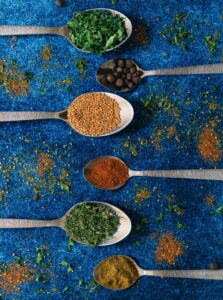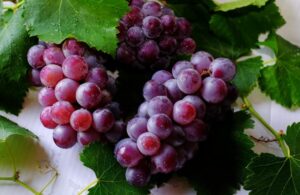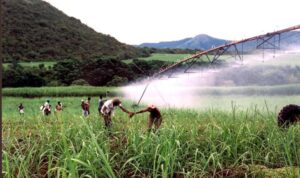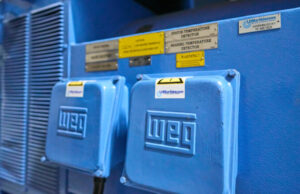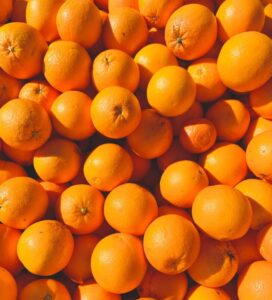Introduction
Cotton remains one of the most versatile crops grown by humanity, noted for its appearance, comfort and the many useful products it provides.
- From the seed: flour and feed, refined oil (salad and cooking), margarine, soap and cosmetics, writing materials, rayon industrial fabrics, yarns, plastics, lamp and candle wicks, twine, rugs, mops, furniture upholstery etc.
- From the lint: clothes, underwear, linings for canvas, tents, medical bandages, sheets, towels, curtains etc.
Because it is both a food and a fibre crop, a multisectoral, multipronged approach is what is needed to nurture this sector to reach its full potential (De Bruyn, 2021).
International business environment
Find international updates at:
- https://cottonsa.org.za
- The cotton pages of the International Trade Center website, www.intracen.org/itc/sectors/cotton.
- A further useful resource is the United States Department of Agriculture (USDA)’s Cotton: World Markets and Trade circular.
- International Cotton Advisory Committee (ICAC) www.icac.org. The ICAC is an association of governments of cotton producing, consuming and trading countries.
- Better Cotton Initiative (BCI) https://bettercotton.org The BCI is “a global not-for-profit organisation and the largest cotton sustainability programme in the world”.
- Cotton made in Africa, an initiative of the Aid by Trade Foundation (AbTF) that helps African smallholder cotton farmers in Africa to improve their living conditions – www.cottonmadeinafrica.org
- Cotlook Outlook – www.cotlook.com
Local business environment
Visit https://cottonsa.org.za for the latest cotton market reports.
Historical cotton production areas include Limpopo Province (Springbok flats from Bela-Bela to Mokopane and Weipe), North West Province (Taung, Stella, Delareyville, Maratsane), KwaZulu-Natal (Makhathini Flats), Mpumalanga and Northern Cape (lower Orange River, Vaalharts, Douglas, Marydale and Prieska).
Farmers market their cotton in one of the following ways:
- The seed cotton is sold by the grower to a ginner who gins the cotton and sells the cotton lint for his own account to spinners (and seed to processors), either directly or by making use of agents; or
- The grower does not sell his seed cotton to the ginner but contracts the ginner to gin it on his behalf on payment of a ginning fee (some growers also own their own gins). The cotton lint and seed remain the property of the producer who then either markets it himself or contracts the gin or someone else to market the cotton lint (or seed) on his behalf.
- The grower can gin their cotton in their own gins. They can then either market the cotton lint and seed themselves or get someone else to do it for them.
Some of the ginners currently operating in South Africa are farmer-owned.
Challenges to our cotton producers are:
- Competition from other summer crops.
- Relative high input costs.
- High cost of mechanization, i.e. picking costs.
- Low cotton prices.
Growth in the sector slowed with the pandemic, but 2022 was a good year price wise. The area planted with cotton was expected to stabilise and return to “a modestly increasing trend over the decade to come (BFAP, 2022).
Hectares planted and yields for the Republic of South Africa (Swaziland excluded) are on the graph that follows:
Marketing Year | Hectares Irrigation | Hectares Dryland | Total Hectares | Yield Irrigation | Yield Dryland | Average Yield |
2013/14 | 4 566 | 2 892 | 7 458 | 4 785 | 687 | 3 198 |
2014/15 | 8 592 | 6 636 | 15 228 | 4 946 | 1 129 | 3 283 |
2015/16 | 5 843 | 2 510 | 8 353 | 4 563 | 635 | 3 383 |
2016/17 | 7 301 | 10 540 | 17 841 | 4 411 | 1 048 | 2 424 |
2017/18 | 19 273 | 14 355 | 33 628 | 4 595 | 910 | 3 022 |
2018/19 | 23 781 | 17 192 | 40 973 | 4 781 | 1 019 | 3 193 |
2019/20 | 11 543 | 16 132 | 27 675 | 4 393 | 1 206 | 2 477 |
2020/21 | 10 511 | 5 802 | 16 313 | 4 515 | 1 468 | 2 552 |
2021/22 | 7 195 | 10 823 | 18 018 | 4 306 | 1 106 | 2 384 |
2022/23 | 6 308 | 13 556 | 19 864 | 4 327 | 1 285 | 2 251 |
2023/24 | 6 896 | 10 942 | 17 838 | 4 067 | 873 | 2 108 |
2023/24 figures are a final estimate. Yield figures are Kg seed cotton per hectare
Small-scale farmer news
Find the latest news and information about small-scale cotton farmer development at https://cottonsa.org.za.
Two of the main objectives of the National Cotton Strategy Plan, developed by Cotton SA and other role players, are to broaden participation enabling small producers to continue increasing their share of the South African crop as well as to raise productivity by training of smallholder cotton growers. Cotton SA’s contribution in achieving this objective is amongst others by way of The Small Scale Cotton Farmers’ Forum (a standing committee of Cotton SA). The main function of the Forum is to co-ordinate and monitor progress with regard to the set objectives and to provide an environment where positive interaction between role-players could lead to increased market access for the small cotton farmer.
Cotton SA is an AgriSETA accredited training institution and its small-scale farmer training programme remains its core transformation initiative. The training of small-scale farmers takes place in collaboration with local government and the agricultural colleges in the small-scale farmer cotton production regions.
This formal skills development program (which involves a certain number of unit standards at NQF level 1) is organised in four 5 day modules, each of which are synchronised with the normal production cycle of the crop and presented over a 12 month period. The subjects covered in the 4 modules are:
- introduction, soil preparation and planting
- plant protection, pests, diseases and weeds
- pre-harvest crop preparation, harvesting and grading
- financial management
The courses are theoretical as well as practical, the latter making up about 60% of course content. Experts in each field are drawn from various cotton role players to impart their expertise to the groups in training.
Cotton SA also has a mentorship programme for small-scale cotton farmers in view of the need for a support system for farmers already trained in cotton production. This initiative is aimed to identify and guide mentors in the different small-holder farmer cotton production regions, who in turn impart their knowledge and practical skills to other small-holder farmers, in order to enable the latter to produce cotton in a sustainable and profitable manner.
Further reference:
- National Agricultural Marketing Council (NAMC). 2023. A Case of Smallholder Cotton Producers in South Africa 2022-2023. A SMAT Baseline Report. Available at www.namc.co.za/wp-content/uploads/2023/12/SMAT-Cotton-Baseline-Report_2023-Final.pdf
National strategy and government contact
Cotton production absorbs labour which appeals to the country’s job creation strategies. There is also a strong emphasis on farmer development, making it important that the industry is given the necessary help it requires to be competitive.
Natural fibres like cotton feed into the clothing, textile, footwear and leather (CTFL) subsector. The Retail–Clothing Textile Footwear Leather (R-CTFL) Master Plan 2030, finalised in 2019, applies. Find the presentation to the Portfolio Committee on progress (2022) at www.thedtic.gov.za/wp-content/uploads/the-dtic-Retail-CTFL-Master-Plan.pdf
The Department of Trade, Industry and Competition (the dtic) supported the five-year plan and establishment of the Southern African Sustainable Textile and Apparel Cluster (SASTAC) in the last decade. SASTAC’s Sustainable Cotton Cluster (SCC), 2014-2019, made a significant impact on cotton’s fortunes in this country. The pandemic halted this progress, but the future is looking positive once more (see the “Local business environment” heading).
In addition to the dtic, other relevant government institutions are the DALRRD and the National Agricultural Marketing Council (NAMC). See www.dalrrd.gov.za and www.namc.co.za respectively.
Role players
Further reference:
Associations
- Cotton SA also acts as industry forum and facilitator for the development of the small cotton grower sector. Cotton SA is also the administrator of statutory measures (compulsory submission of monthly returns by processors and imposition of a levy on cotton lint produced to finance its functions). Cotton SA is not in any way involved in the marketing of cotton or cotton products, which are traded on free market principles.
- Training DVDs on hand picking and machine picking of cotton are available from Cotton SA.
- The Research and Technology Committee of Cotton SA meet on a regular basis with one of the main aims to evaluate research projects identified and prioritised by role players. Research results are obtainable from the Institute and also published on a regular basis in the Cotton SA Katoen magazine.
Websites and publications
Find the “Technical information” option at https://cottonsa.org.za.
Environmental Needs Of The Cotton Plant by Dr CG Theron. This and other related articles may be downloaded from the Cotton SA website.
Cotton SA – Educational Brochure, with needs of scholars and students in mind, is obtainable free of charge. The brochure contains among others, sections on the history, production, processing and uses of cotton.
The following may be ordered electronically from the Cotton SA website – www.cottonsa.org.za:
- The Cotton SA Katoen magazine. This is published bi-annually. Its main focus is on the producer but carries information on the whole industry. Cotton SA distributes the magazine free to subscribers in South Africa.
- Management Guide. This comprehensive bilingual guide was compiled by the ARC-Institute for Industrial Crops and is aimed at the commercial farmer with the aim to broaden his/her knowledge. The publication covers the full spectrum of cotton farming and contains chapters on cultivation guidelines, insect and disease control and the harvesting of cotton.
- Cotton Guide For The Small-Holder Farmer
- Company Brochure
- Core Statistics
Available from the ARC-Agricultural Engineering (ARC-AE) is the booklet Agro-processing of Textile Crops (Cotton, flax, hemp, sisal). Contact 012 842 4017 or visit www.arc.agric.za.
Find the latest Cotton Market Value Chain Profile on the Department of Agriculture Land Reform & Rural Development website, www.dalrrd.gov.za, on the Directorate Marketing pages (find the “Old website” option). The “Cotton production guidelines” and a cotton brochure are also available on this website.
A previous Bureau for Food & Agricultural Policy (BFAP) Baseline (2021-2030) contained a mini-study “Competitiveness of Cotton Production in South Africa”, which compared the profitability of cotton in comparison to maize and sunflower (see Box 4). Find the document at www.bfap.co.za.
The Textile Federation: www.texfed.co.za. Find the database of members and role players e.g. dyers and finishers, knitted fabrics, yarns etc.
Some articles
- King S-J M. 2024, December 3. “From tariffs to Temu: The battle for South Africa’s recovering clothing sector”. PRIMEDIA+. Available at www.primediaplus.com/2024/12/03/from-tariffs-to-temu-the-battle-for-south-africas-clothing-sector
- Tshivhidzo E. 2024, September 12. “Sector master plans critical to investment, boosting exports, creating jobs”. SA News. Available at www.sanews.gov.za/south-africa/sector-master-plans-critical-investment-boosting-exports-creating-jobs
- Botha L. 2022, April 28. “Cotton: the ideal crop for reducing carbon emissions and poverty”. Farmer’s Weekly. Available at www.farmersweekly.co.za/agri-business/empowerment/cotton-the-ideal-crop-for-reducing-carbon-emissions-and-poverty/
- Reporter. 2021, October 14. “Cotton farming provides diversification options for South African canegrowers”. Engineering News. Available at www.engineeringnews.co.za/article/cotton-farming-provides-diversification-options-for-south-african-canegrowers-2021-10-14/rep_id:4136
- De Bruyn C. 2021, January 27. “Cotton: A golden opportunity for South Africa?” Bizcommunity. Available at www.bizcommunity.com/Article/196/742/212489.html
- Van der Walt J. 2020, May 20. “Cotton industry upbeat despite global plunge in consumption”. Farmer’s Weekly. Available at www.farmersweekly.co.za/agri-news/south-africa/cotton-industry-upbeat-despite-global-plunge-in-consumption/
- Cotton SA. 2019, June 4. “Regional workshop promoting cotton by-products in Africa”. AgriOrbit. Available at www.agriorbit.com/regional-workshop-promoting-cotton-by-products-in-africa/
- Hartebeest C. 2019, April 17. “Revival of small-scale cotton farming can push back rural poverty”. Food for Mzansi. Available at www.foodformzansi.co.za/between-the-headlines-revival-of-small-scale-cotton-farming-can-push-back-rural-poverty/
- Staff Reporter. 2019, March 13. “Sustainable cotton initiative increases cotton production more than eight-fold”. Food for Mzansi. Available at www.foodformzansi.co.za/sustainable-cotton-initiative-increases-cotton-production-more-than-eight-fold/
- Coleman A. 2019, March 12. “Cotton can be more profitable than maize!” Farmer’s Weekly. Available at www.farmersweekly.co.za/crops/field-crops/cotton-can-be-more-profitable-than-maize/
- Hartebeest C. 2019, February 6. “Electrician finds his spark in cotton farming”. Food for Mzansi. Available at www.foodformzansi.co.za/electrician-finds-his-spark-in-cotton-farming/
- Joubert R. 2018, August 20. “How SA cotton industry created 5 500 jobs in four years”. Farmer’s Weekly. Available at www.farmersweekly.co.za/agri-business/empowerment/sa-cotton-industry-created-5-500-jobs-four-years/
- Dean S. 2017, November 1. “Cotton gains ground with up-to-date harvesting tech”. Farmer’s Weekly. Available at www.farmersweekly.co.za/crops/field-crops/cotton-gains-ground-date-harvesting-tech/
- Ngobese T. 2015. “Cotton project set to transform rural community”. Vuk’uzenzele. Available at www.vukuzenzele.gov.za/cotton-project-set-transform-rural-community
- Ntuli N. 2015, August 18. “Makhathini cotton comeback”. The Mercury. Available at www.kzndard.gov.za/images/Documents/Newsroom/MEDIA_CLIPPINGS/Media_Clippings_2015/AUGUST_2015/Makhathini%20cotton%20cameback_.pdf

